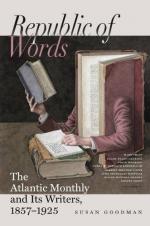The first he had studied in the authors of antiquity in his third volume, beginning in this with the episode of Cupid and Psyche in Apuleius; then following up, through the moderns, the expression of Ingenuous Love in Corneille, La Fontaine, Sedaine, Bernardin de Saint-Pierre, Milton, Gessner, Voss, Andre Chenier, and Chateaubriand. For the last he finds more blame than praise. Indeed, this effect-seeking writer, with all his genius, seemed less fitted than any one to express the natural and spontaneous. His Atala, who charms us so at the first reading, deals in studied emotions. As to Rene, his is the vain sentimentality parading its own impotency for higher feelings, a virtual boasting of want of soul,—the sickly dissatisfaction of Werther, without his passion for an excuse. M. Saint-Marc Girardin then follows up his subject through later authors, even in Madame George Sand and in Madame Emile de Girardin. He is particularly severe upon Lamartine, that poet “who for more than thirty years seemed best to express love as our century understands it,” but who in Raphael and Graziella destroyed, by disclosing too much, the power of his “Meditations Poetiques.”
On Conjugal Love the classic models are first consulted,—Oenone, Evadne, Medea,—these characters being followed through the delineation of modern dramatists. We know of no more exquisite criticism than the pages devoted to Griseldis. Analyzing the accounts of Boccaccio, Chaucer, and Perault, our author concludes with the play of “Munck Bellinghausen.” The last chapters, on “Love and Duty,” are among the most eloquently written in the volume. For style, M. Saint-Marc Girardin is second to no living author of France.
In this course we find an evident predilection for the models of antiquity. When a comparison is instituted between the ancients and the moderns, we feel pretty certain of the result before the writer has proceeded very far. Not that we ever find a systematic idolizing of all that is classic merely. Far from it. Modern writers are not neglected. In this particular a genuine service is done to critical literature. It often seems as if literary lecturers and historians were attacked by an aesthetic presbyopy. For them the present age never produces anything worth even a passing remark. The masterpieces they notice must be old and time-honored. Not so in the present studies on the passions. Ponsard finds his place side by side with older names. After an appreciative notice of the Lucretia of Livy, we find a comment on the Lucretia which may have been played the week before at the Theatre Francais. Nor is it a slight service done to contemporary letters, when a master-critic turns his thoughts to works which, if they do not hold the first rank, yet, by the talent of their authors and the nature of their subjects, have attracted all eyes for a time. Such are the writings of Madame George Sand. Of these, “Andre,” “La Mare au Diable,” and “La Petite Fadette” are reviewed with praise in the work under consideration, while the force of criticism is expended on “Indiana,” “Lelia,” and “Jacques.”




